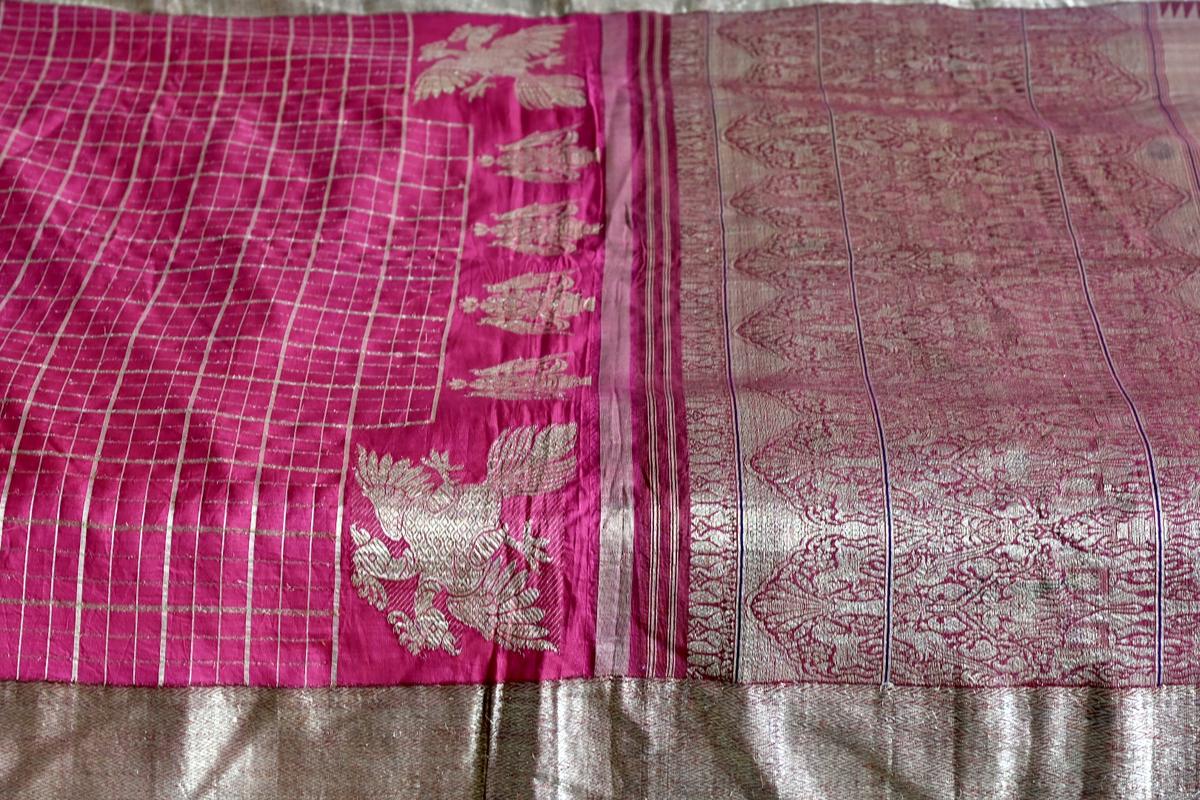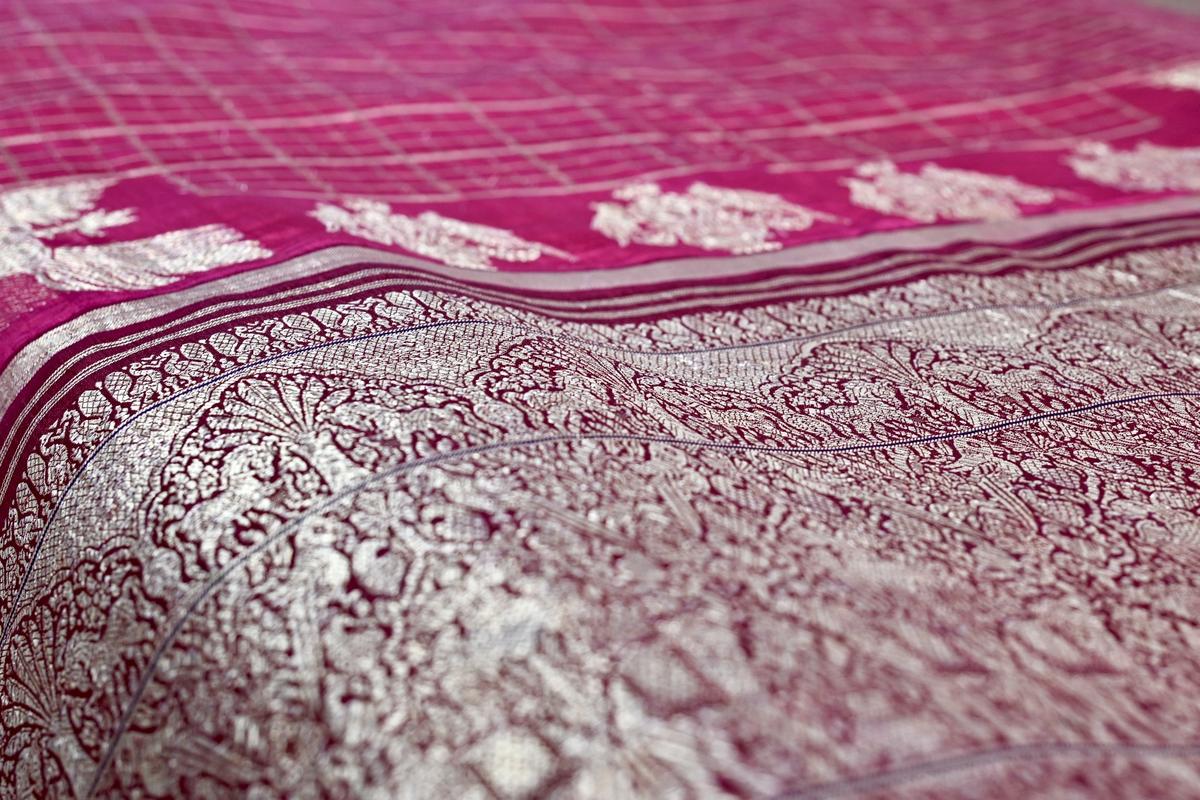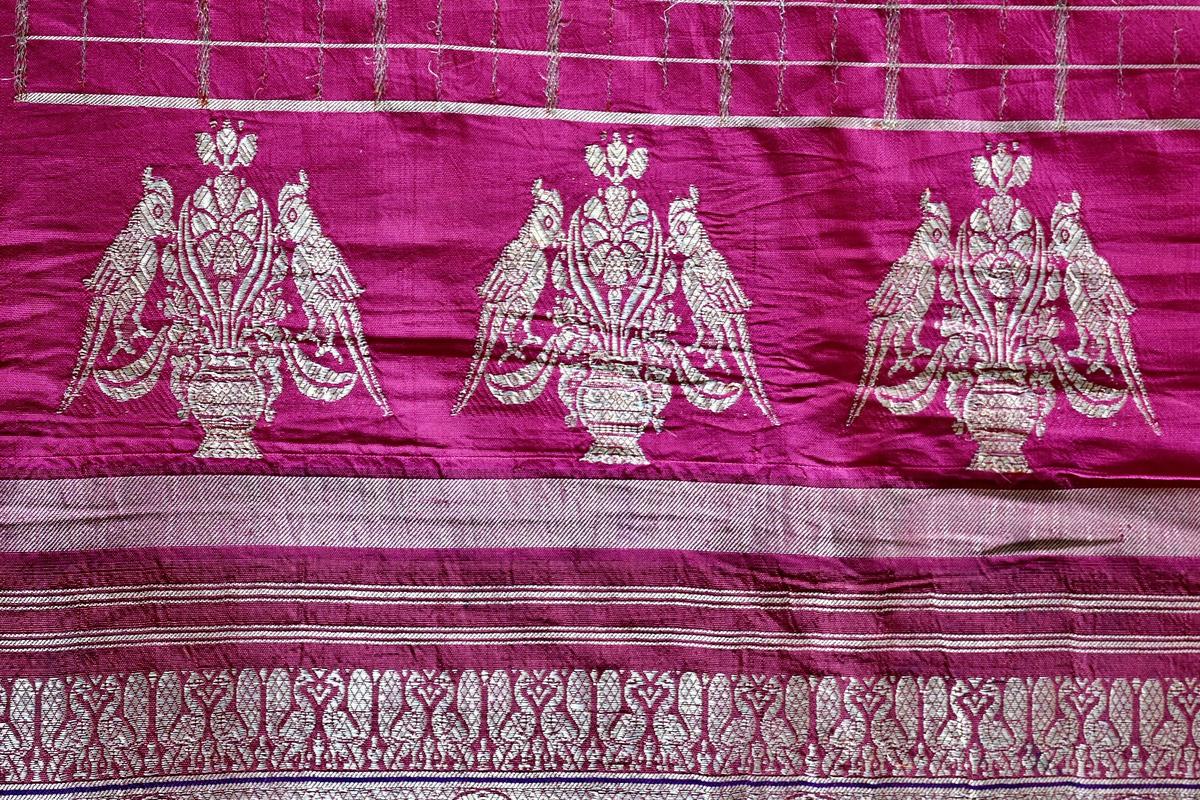
sari mas 112 years from the Maharaja of Mysore Nalvadi Krishnaraja Wadiyar | Photo Credit: SUDHAKARA JAIN
Kamal TN and Sowmya, residents of Subramanyapura in Uttarahalli, are the custodians of a weaving heritage that dates back more than a century. The article in his possession was a gold sari sent by the Maharaja of Mysore Nalvadi Krishnaraja Wadiyar.
For four generations, the family has safely guarded a pure silk and gold sari weighing almost two kilograms, which was given to Kamal’s great-grandfather, Tunga Adappa Shetty, Chief Shroff of the Mysore Kingdom by the King of Mysore Nalwadi Krishnaraja Wadiyar. This sari is a response to the devoted palace employees who are respected by the King.
“It is said that the two were known as walking buddies,” Kamal said.

sari mas 112 years from the Maharaja of Mysore Nalvadi Krishnaraja Wadiyar | Photo Credit: SUDHAKARA JAIN
“We keep the sari in a pure cotton cover in the closet, take it out only during Navaratri because the sari symbolizes Devi Shakthi, and it has to be worshiped for nine nights representing the feminine nature of the deity,” says Sowmya.
Tunga Adappa Shetty’s family is well aware of the heritage value of sari. Kamal’s father, Narayana Murthy, said, “My son Kamal and his daughter-in-law Sowmya have the same mindset to respect our cultural heritage. This view has seen a century-old saree preserved in its original beauty.
“We follow this as a tradition and the sari is in the middle of pujas and Navaratri celebrations. Just for one day during Dasara, the sari is exhibited for the benefit of textile connoisseurs and heritage lovers. The elders of the family said that the Maharaja took personal interest in ensuring that the artisans of Kanjeevaram complied specifics given,” said Sowmya.

sari mas 112 years from the Maharaja of Mysore Nalvadi Krishnaraja Wadiyar | Photo Credit: SUDHAKARA JAIN
“According to the stories handed down, it took Tamil Nadu weavers months to make a sari with pure silk and gold zari. Adappa Shetty and the Maharaja monitored the progress, with the weavers regularly bringing the sari for approval,” added Kamal.
Warp and weft
In 1897, during the reign of Mysore Maharaja Nalwadi Krishnaraja Wadiyar, there was a fire in the Amba Vilas Palace during the wedding ceremony of Princess Jayalakshmanni’s sister. The 11-day inferno reduced the royal palace to a pile of rubble, despite the best efforts of experts called in from Bengaluru.
The new Mysore Fort Palace that replaced it was inaugurated in 1912, and the Maharaja opened it to thousands of invitees. Tunga Adappa Shetty and his family were among the special guests at the event and the hand-woven Kanjeevaram was an exclusive return gift to them from the Maharaja of Mysore.
Attention to detail

sari mas 112 years from the Maharaja of Mysore Nalvadi Krishnaraja Wadiyar | Photo Credit: SUDHAKARA JAIN
Apparently, the Maharaja wanted to liven up the new palace in art for his descendants. After much discussion, it was decided that there would be a sari weave drawing the design and decoration. “Sari shows the Amba Mahal in its entirety and is said to be the only depiction of the history of the palace that has been recreated on fabric. The Maharaja presented this work of art to my grandfather, from among those who are close, explaining the friendship and bond of friendship. That is what we respect, except the value of the material,” said Kamal.
The saree is a stunning magenta color with gold checks all over and a luxurious gold brocade border. One hammer sport erstwhile Mysore State emblem of Gandaberunda (mythical bird) sits majestically and beautifully on the left, while many of the panels inside have traditional motifs of parrots, swans, horses, elephants, peacocks and pillars.
The sari has maintained its original glory since it was woven in 1912 and even today, the colour, luster and thread work remain intact due to the use of pure zari and silk, the owner said.
For details of Navaratri display this year contact kamaltn@gmail.com or call 9343885151
Published – 08 October 2024 07:06 IST




